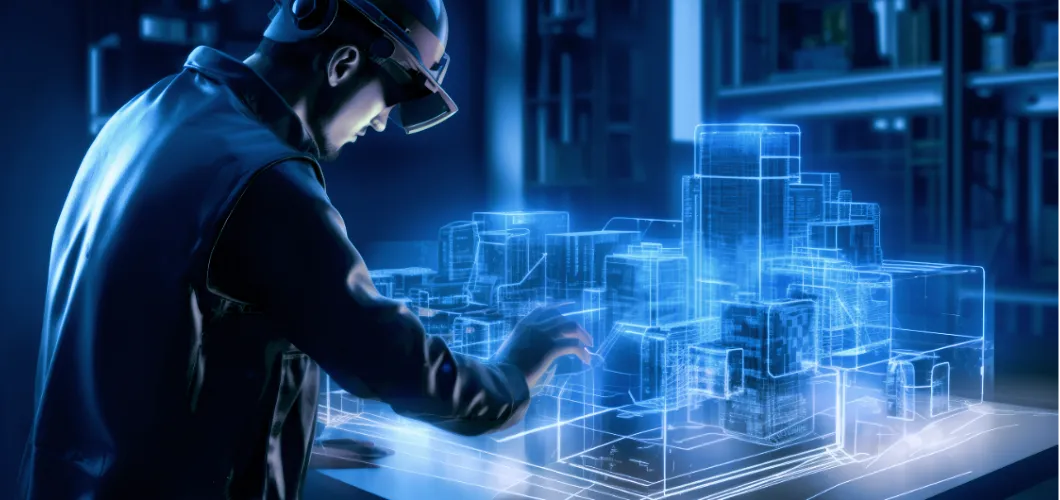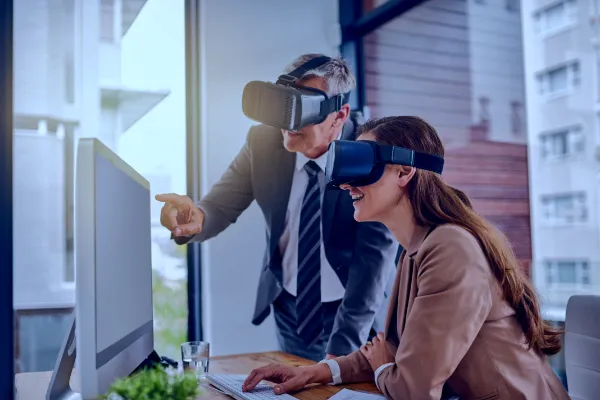
Virtual Reality (VR) in BIM: Enhancing BIM visualization through VR technologies
Building Information Modelling (BIM) continues to evolve to meet the dynamic needs of the construction industry. The complexity and scale of modern projects require more immersive and intuitive tools. Virtual Reality in BIM is one such tool that is offering a revolutionary way (indeed, we mean it) that has significantly enhanced visualization. Thanks to the integration of virtual reality or VR in BIM, stakeholders are now able to directly explore and interact with the digital models in three-dimensional space. This has translated into a more dynamic, collaborative, and efficient design process.
Role of Virtual Reality in Enhancing BIM
VR in BIM is enhancing BIM by providing access to project stakeholders in a simulated environment. When you apply VR to 3D models, it transforms 3D models into immersive and interactive experiences. This brings a wealth of benefits.
In this article, we are going to explore a few of them.
VR in BIM Improves Visualization and Understanding
Unarguable, the biggest advantage offered by VR in BIM is enhanced visualization. There’s no need to explain to you that traditional 2D drawings are sometimes difficult to interpret. However, VR allows you to have access to a realistic sense of space, scale, and design by allowing you to walk through a building before it is constructed. Thanks to this immersive experience (we know we have been using this phrase quite a lot, but it is what it is) help stakeholders, including clients, designers, and construction teams, better understand the project and its potential issues early in the design process.
VR in BIM Enhances Collaboration and Communication
VR in BIM immerses multiple users in the same virtual environment, it enhances collaboration and communication. Stakeholders can have real-time discussions and decision-making. Additionally, teams can review design options more efficiently and resolve conflicts proactively. This real-time collaboration and communication greatly help in reducing misunderstandings while ensuring that everyone is on the same page. All of this translates into more efficient and smoother workflow which later translates into efficient project delivery.
Virtual Reality in BIM Enables Early Detection of Design Flaws
Efficient clash detection in the early stage of the project is extremely important for any construction project to succeed. If not done so, there will be reworks, conflicts, delays, and ultimately cost overruns. However, by integrating VR with traditional 3D models, you enable your team to get a more intuitive understanding of the spatial and functional aspects of the design. Stakeholders can explore virtual models to identify potential problems and fix the same proactively. This proactive approach minimizes costly rework and delays.

If you are on a hunt for experienced BIM consultants in UK for efficient clash detection, book free consultation with us.
Client Engagement and Approval
One of the key challenges faced in the construction industry is to engage clients and get their approval. Thanks to VR, you now have access to a powerful tool for client presentations, as it allows your clients to experience the design in a highly realistic manner.
VR in BIM enables clients to walk through buildings virtually and explore different design options. Likewise, clients can give you feedback in real time. This immersive experience (again!) helps you greatly in managing your client expectations and ensuring greater satisfaction. And in the words of Michael LeBoeuf, “a satisfied customer is the best business strategy of all”.
Training and Safety

You can also train your workers through VR. Likewise, you can deploy it to improve safety protocols. By harnessing the power of virtual reality, you can provide your workers with access to a risk-free environment to practice and get them to familiarize themselves with the projects. Thus, you can use this training to reduce on-site accidents and improve overall safety.
Challenges and Future Prospects
As VR in BIM is still an emerging and developing technology, it has its own set of challenges. One such challenge is the setup costs for VR hardware and software. Being relatively new tech, it carries a higher price tag. Likewise, there is a learning curve associated with this technology, which means you must train your project teams, as creating high-quality VR content requires time and expertise.
The prospects look promising. With the rapid rise of artificial intelligence and improvements in VR equipment production processes, prices will eventually fall. Adding to this the power of machine learning and BIM cloud, VR in BIM will hopefully enable more sophisticated simulations and predictive analyses.
If you have any more questions about VR in BIM, drop them at info@ddcsolutions.co.uk. We’ll forward these questions to our BIM experts, and you’ll receive a response promptly. On the other hand, if you seek the services of BIM experts to reduce waste, cost, and improve risk management, book your free consultation and get a no-obligation quote.


One Response